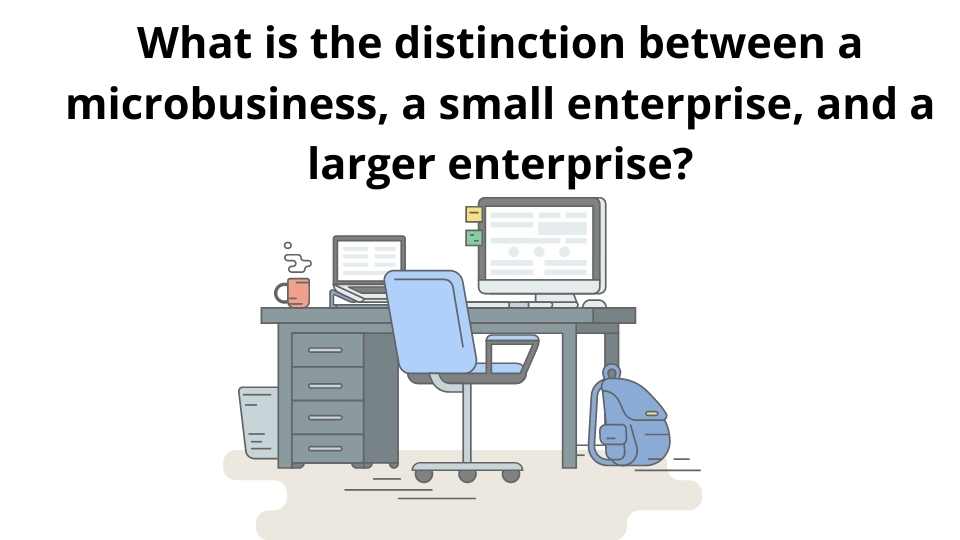Under the Micro, Small, and Medium Enterprises Development (MSMED) Act of 2006, Micro, Small, and Medium Enterprises (MSME) are split into two groups.
- Manufacturing Enterprises: These are companies that manufacture or produce things connected to the industries mentioned in the first schedule of the Industries (Development and Regulation) Act of 1951, or that use plants and machines to add value to the end product.
2. Service businesses are those that specialize in providing or executing services. The categories are organized based on the amount of money spent on equipment.
Suggested read- MSME registration
What procedures must I take to establish an MSME?
Anyone who wants to start a micro, small, or medium business can do so by completing a self-declaration form and submitting it through the Udyam Registration site. It is not necessary to upload any documents, papers, certifications, or other verification.
Is it required to register an already established business?
- All current companies registered under EM–Part-II or UAM must re-register on the Udyam Registration site on or after July 1, 2020.
- All businesses registered before June 30, 2020, will be reclassified in accordance with this notice.
- Existing firms that were registered before June 30th, 2020, will only be valid until March 31st, 2021.
How do you select a categorization group based on the quantity of money invested and handed over?
- Businesses will be classified using a combination of investment and turnover criteria.
- In the event that a company exceeds the ceiling limits specified for either the current category of investment or turnover criteria, it will cease to exist in that particular category and become the next higher category; however, no company in the lower category shall be placed unless it falls below both the investment and sales criteria in the current category.
- Each unit has a single goods and services tax identification number (GSTIN), as specified in the Permanent Account Number (PAN), shall be treated as one company with only the aggregate values used to determine whether it is classified as a micro, small or medium in terms of sale and investment figures for all these companies.
MSME keeps the information on the Udyam Registration site up to date.
- A company with an Udyam Registration Number must update its information online in the Udyam Registration site on a self-declaration basis, including the contents of the preceding fiscal year’s ITR and GST Return, as well as any other supplementary information that may be required.
- Failure to update critical data within the timeframe specified in the online Udyam.
If the enterprise uses the registration site, its status will be suspended.
- The business classification will be updated based on information provided by or obtained from government sources such as ITRs or GST returns.
- In the event of graduation (from a lower to a higher category) or reverse-graduation, a message regarding the change in status will be sent to the enterprise (sliding down to a lower category).
There will be a transition period due to a change in status.
In the event of an increase in investment in plant and machinery or equipment, turnover, or both, followed by re-classification, an enterprise will retain its current status until the end of the year in which it was registered.
Also, Read- Udyam registration Process
Some of the benefits of MSME registration include:
Under the Micro and Small Enterprises Credit Guarantee Fund Scheme, the government has made collateral-free loans available to MSEs. The government has offered 3 lakh crore in credit guarantees to MSMEs with outstanding loans of 25 crore rupees and revenue of less than 100 crore rupees.
1. MSME-registered businesses are given priority when it comes to government licenses and certifications.
2. Bank loans are less expensive because the interest rate is quite low, ranging between 1 and 1.5 percent.
3. It allowed MAT credits to be carried forward for up to 15 years, rather than the previous 10 years.
4. A variety of tax credits are available.
5. Up to a certain amount, the costs of registering a patent and applying for ISO certification are refunded to these businesses.
6. MSME may be eligible for a subsidy for bar code registration.
7. You can get a discount on your electric bills by submitting an application to the Electricity Department.
8. There is a One-Time Settlement Fee for unpaid MSME payments.

